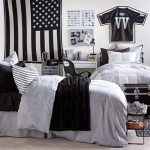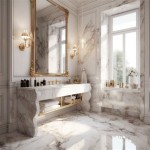Gypsy Home Decor: A Guide to Bohemian Eclecticism
Gypsy home decor, also known as bohemian or boho chic, represents a distinct interior design style characterized by its free-spirited, unconventional, and eclectic nature. This style draws inspiration from various cultures and historical periods, resulting in a unique and personalized aesthetic. It emphasizes comfort, individuality, and the layering of textures, patterns, and colors. Understanding the core elements and principles of gypsy home decor is crucial for effectively incorporating it into a living space.
The origins of bohemianism can be traced back to 19th-century France, where artists and intellectuals embraced a non-traditional lifestyle, rejecting societal norms and embracing creativity. This movement gradually influenced interior design, evolving into the style we now recognize as gypsy or bohemian. The style's emphasis on global influences reflects the nomadic and artistic spirit associated with the Romani people, often referred to as "gypsies," though the term is sometimes considered outdated and carrying negative connotations. Modern interpretations of gypsy decor often prioritize ethical sourcing and respect for cultural origins.
The foundational principles of gypsy home decor revolve around creating a space that feels welcoming, comfortable, and reflective of personal taste. It is less about strict adherence to rules and more about embracing individuality and creating a layered, visually rich environment. Key aspects include the use of vibrant colors, natural materials, vintage or repurposed items, and a maximalist approach to accessorizing.
Incorporating Color and Pattern
Color plays a pivotal role in gypsy home decor. The style typically utilizes a mix of vibrant and saturated hues, sometimes combined with earthy and neutral tones. Deep reds, oranges, yellows, greens, blues, and purples are commonly employed. These colors are often used in combination, creating a dynamic and energetic atmosphere. The intentional use of contrasting colors, such as pairing a turquoise wall with a deep orange rug, is a hallmark of the style.
Pattern is equally important. Gypsy decor celebrates the use of a wide variety of patterns, often drawn from different cultures and historical periods. Ikat, paisley, tribal prints, floral motifs, and geometric designs are frequently incorporated. These patterns can be found on textiles such as rugs, cushions, curtains, and tapestries. The key is to mix and match patterns without being overly concerned with perfect coordination, creating a visually stimulating and eclectic effect. Layering different patterns helps create depth and visual interest in the space.
While bold colors and patterns are central, balancing them with neutral elements is essential. Walls painted in off-white, beige, or light gray can provide a backdrop that allows the bolder colors and patterns to stand out without overwhelming the space. Natural materials, such as wood and rattan, also offer a neutral counterpoint to the more vibrant elements.
Utilizing Textiles and Textures
Textiles are fundamental to gypsy home decor, contributing significantly to the overall warmth and comfort of the space. The layering of different textures creates a tactile and visually appealing environment. Common textiles include velvet, silk, cotton, linen, and wool. These materials are often used in combination, adding depth and richness to the room.
Rugs are particularly important in defining the space and adding warmth underfoot. Persian rugs, kilim rugs, and Moroccan rugs are popular choices, known for their intricate patterns and vibrant colors. Layering multiple rugs, either of different sizes or patterns, is a common technique in gypsy decor, creating a unique and personalized look. Smaller rugs can also be used as wall hangings, adding texture and visual interest to the walls.
Cushions and throws are another essential element. A variety of cushions in different shapes, sizes, and patterns can be scattered across sofas, chairs, and even the floor, creating comfortable and inviting seating areas. Throws made from different materials, such as knitted wool, faux fur, or embroidered fabrics, can be draped over furniture, adding warmth and texture. The combination of different cushions and throws creates a layered and inviting atmosphere.
Curtains and tapestries also contribute to the overall aesthetic. Sheer curtains can be used to filter light and create a soft, ethereal atmosphere, while heavier curtains can add privacy and block out light. Tapestries, particularly those with intricate patterns or embroidery, can be used as wall hangings or even as bedspreads, adding a focal point to the room. Macrame wall hangings and plant hangers have also become a popular addition to the style, adding a touch of natural texture and bohemian flair.
Embracing Eclecticism and Personalization
Eclecticism is at the heart of gypsy home decor. This means incorporating items from different cultures, historical periods, and personal experiences. Vintage furniture, antique pieces, handmade crafts, and souvenirs from travels can all be incorporated into the design. The key is to curate a collection of items that reflect personal taste and create a sense of individuality.
Personalization is crucial. Displaying personal collections, such as books, artwork, or decorative objects, adds character and makes the space feel more authentic. These items can be arranged on shelves, coffee tables, or mantels, creating curated displays that tell a story. Photographs, artwork created by oneself or family members, and other personal memorabilia can also be incorporated, adding a sentimental touch to the decor.
Plants are another important element in creating a natural and organic atmosphere. Houseplants of all kinds, from small succulents to large leafy plants, can be used to add greenery and purify the air. Hanging plants, potted plants, and plants arranged on shelves or tables can all contribute to the overall aesthetic. Plants not only add visual appeal but also create a sense of calm and tranquility.
Lighting plays a crucial role in setting the mood. Soft, warm lighting is preferred over harsh, bright lighting. Lamps with dimmer switches allow for adjusting the light levels to create a cozy and inviting atmosphere. String lights, lanterns, and candles can also be used to add a touch of romance and ambiance. The layering of different light sources creates depth and visual interest in the space.
Ultimately, gypsy home decor is about creating a space that feels authentic and reflective of personal style. It is a style that embraces imperfection, celebrates individuality, and encourages the layering of different textures, colors, and patterns. By incorporating these key elements and principles, anyone can create a bohemian-inspired living space that is both comfortable and visually captivating.

Unique Statement Interiors Bohemian Decor Interior

Heart Warming Gypsy Home Decor Thoughts Hippie Boho

30 Fascinating Boho Chic Bedroom Ideas Eclectic Design

Bohemian Style Room Decor Ideas For Your Home Spacejoy

Eye For Design Decorating Gypsy Chic Style

Pin On Diy Home

Bohemian Style Room Decor Ideas For Your Home Spacejoy

How To Give Gypsy Look Bedroom Decor Royal Furnish

N Toran Bohemian Home Decor Colorful Window

Pin On Arredamento Bohemien







